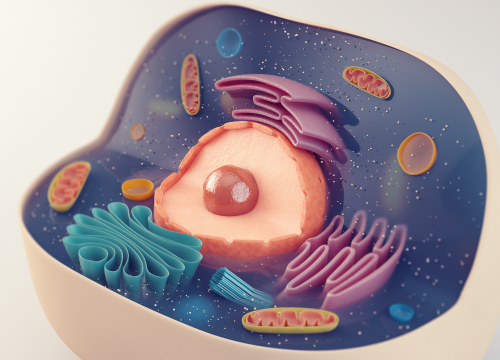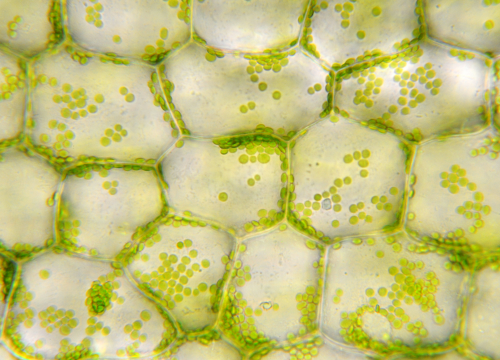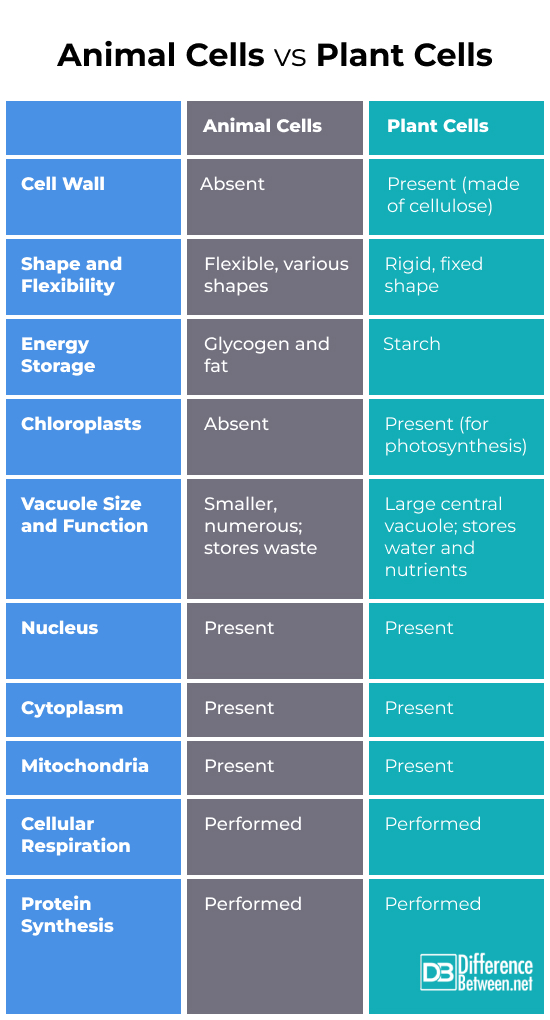Introduction
What sets your heart beating and brings the world to life in shades of green? It all comes down to cells, the basic units of life. Picture them as tiny, vibrant cities, each with its own rules and roles. More than just biological bricks, cells contribute to life’s diversity. Like threads in life’s tapestry, animal and plant cells weave their unique patterns. Why bother about the differences? It’s fascinating how a leaf cell can use solar energy, while an animal cell can’t. From advancing drug development to paving the way for future energy generation, these microscopic marvels hold the keys. Shall we begin this small journey?

What are Animal Cells?
The Basic Unit of Animal Life
Ever wondered about the cat purring on your lap or the butterfly fluttering by? Animal cells—tiny yet complex—shape them. Animal cells are like bustling cities with flexible boundaries, changing shape as needed, unlike plant cells. These addressless cells make up every animal kingdom member, from insects to whales.
Key Components and their Functions
So, what happens in these tiny cities? DNA, the blueprint of life, resides in the nucleus, the command center. City hall dictates what happens and when. Organelles work in the cytoplasm, surrounding the nucleus. Like power stations, mitochondria convert food into energy. Lysosomes clear up trash. In there, a vast world of parts is vital to the cell and animal’s survival.
Where they are found
These cells exist where? Animals’ entire bodies. From your skin to your muscles, animal cells labor constantly, undetected. Your cat’s purr, a dog’s wagging tail, a bird’s song—they are life in motion.

What are Plant Cells?
Understanding Plant Cells: Fundamentals
Plant cells, stiff, make up all plant life. Consider them mini-factories with robust cell walls. From the massive oak to the delicate rose petal, this rigidity gives plants their structure.
Key Components and their Functions
The nucleus, the genetic blueprint mastermind, is in the plant cell. The cytoplasm, where cell activities occur, surrounds it. Photosynthesis in chloroplasts—nature’s solar panels—is unique to plant cells. The big vacuole stores nutrients and maintains cell pressure. Each part is vital, organizing life-sustaining activities.
Where they are found
Find these little powerhouses where? Throughout plant life! Leaves ruffle in the breeze, fruits tickle your taste buds, and roots anchor plants to the ground. Every breath and veggie mouthful contains plant cells. Nature’s silent but vital architects.
Similarities Between Animal and Plant Cells
Common Cell Functions and Structures
Although they are different, animal and plant cells have some similarities.
- Both types have a nucleus, which contains the DNA, the life blueprint.
- A plasma membrane which is a selective barrier regulating what enters and exits the cell.
- Cytoplasm is a lively marketplace for cell activities.
- Also, mitochondria, the cell’s power factory that converts nutrients into energy in both cell types.
Shared Cellular Processes
Animal and plant cells share basic activities beyond structures.
- Both undergo cellular respiration, which converts glucose into energy.
- They both synthesize proteins, which is produces by ribosomes for cell function and growth.
- Following the universal code of life in their DNA, both types of cells replicate and act on their genetic material.
These common mechanisms demonstrate how animal and plant cells, however unique, are part of the same biological symphony.
Differences Between Animal and Plant Cells
Cell walls presence
The cell wall is a big difference. Polysaccharide cell walls give plant cells shape and support. It is like armor that protects and shapes the cell. Animal cells do not have this stiff wall, so they can bend and change shape more easily.
Photosynthesis and chloroplasts
Chloroplasts are very important to plant cells because they turn light into energy. Plant cells can grow food using only sunlight because of their unique green structure. Because animal cells do not have chloroplasts, they can not do photosynthesis and must get their energy from food.
How Big and What Vacuole Does
Vacuoles are very different in each cell. Plant cells have a big space in the middle that holds water and nutrients and controls the pressure inside the cell. Vacuoles in animal cells are smaller and there are more of them. They store waste and other stuff.
Shape and Flexibility
Whether these cells have a cell wall or not changes their shape and how flexible they are. Plant cells are stiff and can not bend, but animal cells are soft and can.
Energy Storage
Lastly, these cells store energy in a different way. Starch, a type of complex protein, is how plant cells store energy. Animal cells, on the other hand, store energy as fat and glucose.
Animal Cells vs Plant Cells

Summary
What significance does the difference between plant and animal cells have, then? Actually, quite a bit. These minute variations create a vast image. Plant cells, with their protective walls and chloroplasts that absorb sunlight? They are the natural power plants. Furthermore, every breath and every heartbeat are powered by animal cells—those pliable little fellas. This is the blueprint for life itself, not just some science fiction.
The best part? These minute cellular details are extremely significant. They make us more knowledgeable about everything from combating harmful illnesses to raising superior crops. It is similar to discovering nature’s mysteries one cell at a time. Who would have thought something so tiny could be so enormous?
FAQs
What are similarities between plant and animal cells?
Both plant and animal cells are like tiny factories with a lot going on. They’ve got a nucleus, where all the DNA action happens. They’re wrapped up in a plasma membrane, kinda like a security gate. Inside, they’ve got mitochondria (think of tiny power stations) and a bunch of other shared bits and bobs that keep things running smooth.
What is found in plant cells only?
Plant cells have their exclusive club features: a sturdy cell wall (think of a plant’s personal armor), chloroplasts (for turning sunlight into food – pretty cool, right?), and a big vacuole for storing water and stuff.
What do plant cells have that animal cells do not?
Plant cells rock a cell wall, chloroplasts (hello, photosynthesis!), and a big central vacuole – stuff you won’t find in animal cells. It’s like they have their own special toolkit for living the plant life.
Do plant cells have DNA?
Yep, plant cells have DNA, just chilling in the nucleus. It’s like the master plan for the plant, telling it how to grow, survive, and do all its plant-y things.
Are plants unicellular or multicellular?
Most plants you see – trees, flowers, you name it – are multicellular, made up of loads of cells. But hey, there are also some unicellular plants, like algae, doing their thing solo.
What are the 13 parts of a plant cell?
Buckle up, here’s the roll call: 1) Cell Wall, 2) Cell Membrane, 3) Cytoplasm, 4) Nucleus, 5) Mitochondria, 6) Chloroplasts, 7) Vacuole, 8) Endoplasmic Reticulum, 9) Golgi Apparatus, 10) Ribosomes, 11) Lysosomes (in some plant cells), 12) Peroxisomes, and 13) Plasmodesmata. Each part’s got a job, making sure the cell stays on top of its game.
- Difference Between Suicide and Euthanasia - May 22, 2024
- Difference Between Vitamin D and Vitamin D3 - May 21, 2024
- Difference Between Running Shoes and Walking Shoes - April 30, 2024


i think this site is just dandy, i really like the way you make the letter into words, you are a wizard at that
Reply
if you are single text me at 9406319916
Reply
are you a dude or a chick?
Reply
Hi
Reply
Its really a fantastic site for me like children. Text me at 7277077249.
THANKS
Reply
I hate when i wrote difference between animal&plant cell i got this I HATE
Reply
nice
Reply
i love this site this is pretty cool
Reply
LOLOLOLOLOLOLOLOL
Reply
good things
Reply
llllllllllllllllllllllllllllllllllllllllllllllllllllllllllllllllllllllllllllllllllllllllllllllllllllllllllllllllllllllllllllllllllllllllllllllllllllllllllllllllllllllllllooooooooooooooooooooooooooooooooooooooooooooooooooooooooooooooooooooooooooooooooooooooooooooooooooooooooooooooooooooolllllllllllllllllllllllllllllllllllllllllllllllllllllllllllllllllllllllllllllllllllllllllllllllllllllllllllllllllllllllllllso, that is all the differences that have on this so call website????????????????????????????????????
Reply
This is what i call search sec responsce
Reply
I don’t agree with you brats.
Reply
you are so dumb
Reply
Cell is the fundamental and practical unit of life. All life forms from basic bacterium to titan blue whale are
comprised of cells. The fundamental structure of both plant and animal cell are same. The distinction in cell
structure is essentially because of contrast in method of nutrition. As plants are basically auto-trophy and
animal behaves like hetero-trophy.
For more details: http://researchpedia.info/difference-bet…
Reply
Deez nuts
Reply
I liked this website a lot!
Reply